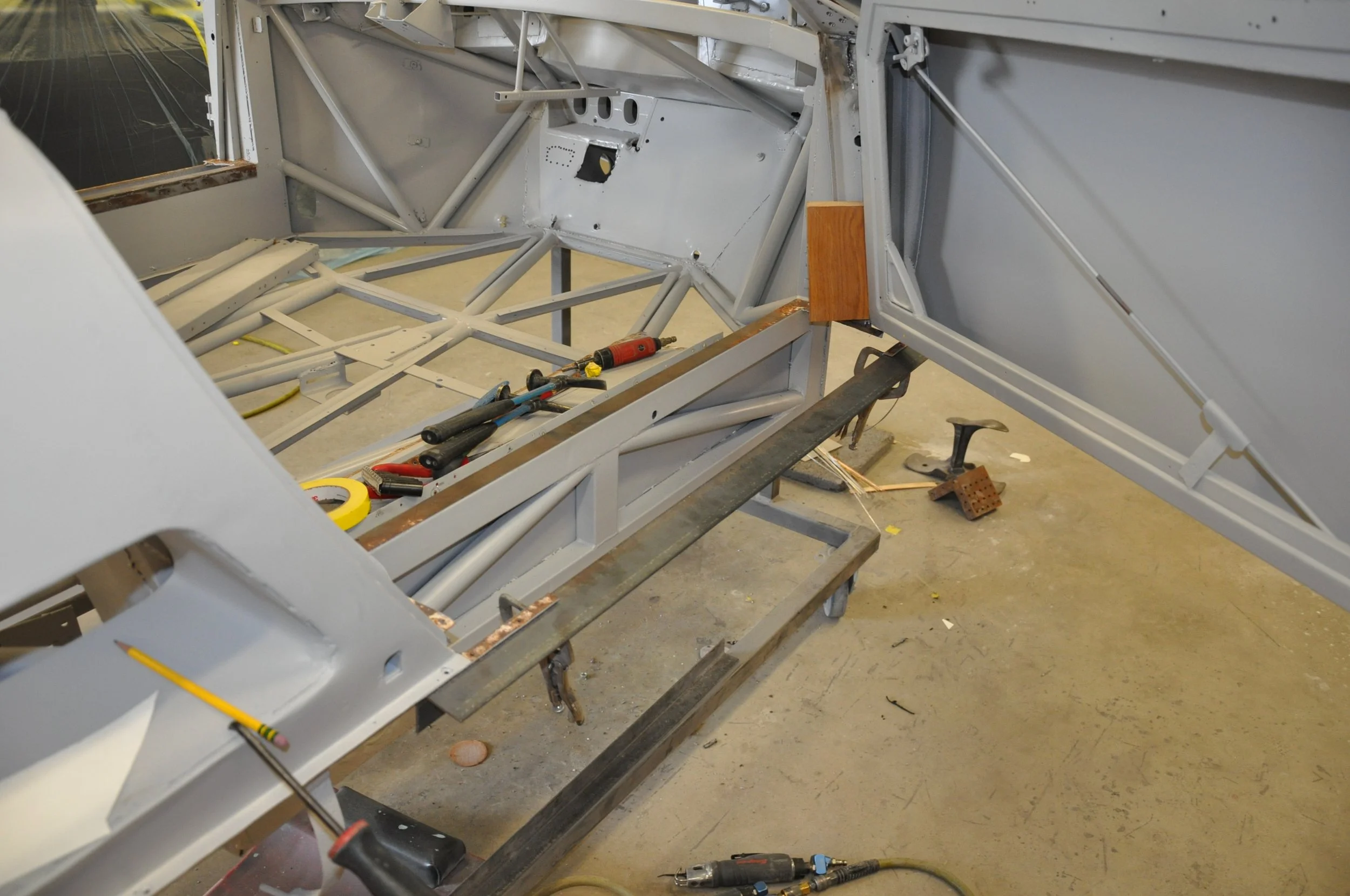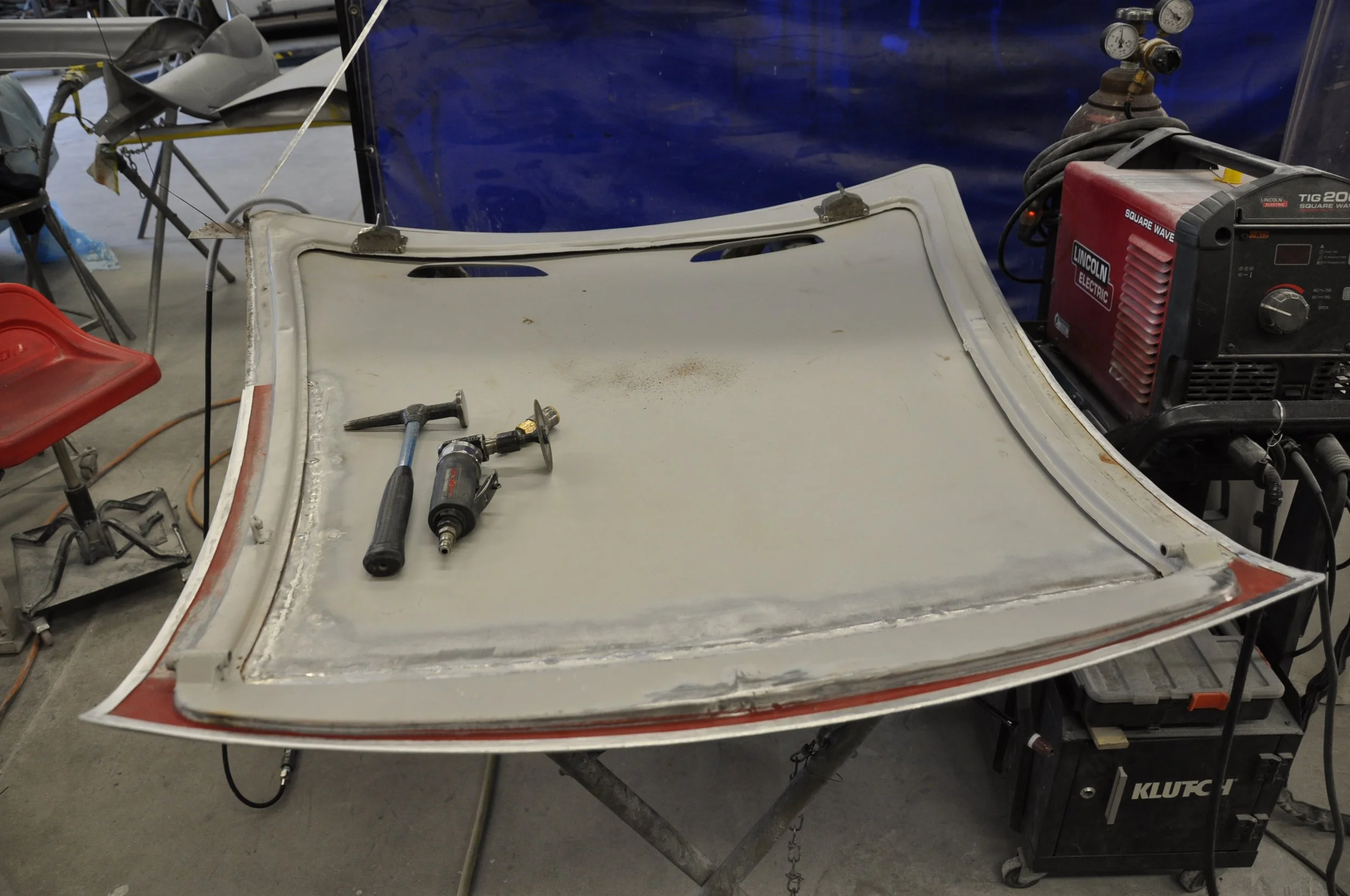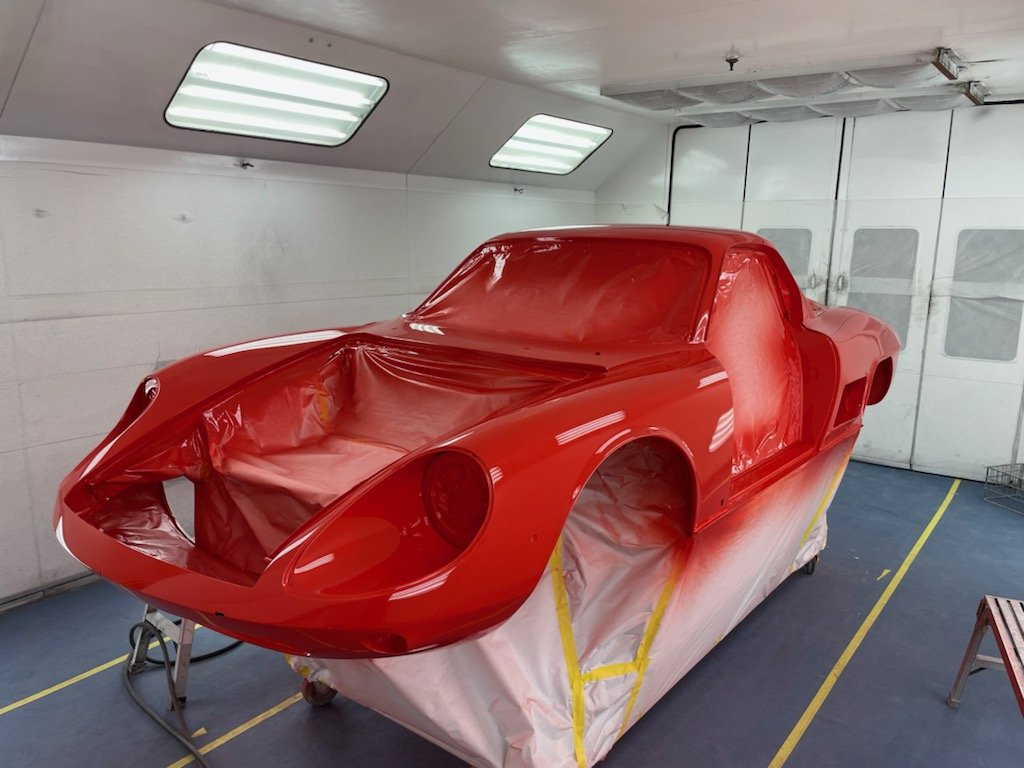Audrain ATS
We’ve been working with Donald Osborne and the team over at the Audrain Museum for several years now. One summer day in 2020, we received a call from him regarding a possible restoration for a car with an amazing story. The car in mind? A one of 12, ATS 2500 GTS. Even more rare, this example is an alloy bodied, racing spec model, which only shares these features with just one other ATS, making it a 1 of 2 in the world.
Of course, we were happy to take on the job. While we restore everything from Fords, Ferraris, and Pegasos, this was going to be a refreshing project to document, research, and restore, as little information can be found anywhere on these cars. After all, their stint was pretty short lived, and their racing performance unfortunately had fallen short. First thing was first: time to photograph, document, and start the disassembly process.
Chassis #2008 was purchased in 1974, and owned by an enthusiast named Nicholas Begovich until February, 2020. Nicholas owned several other similarly flavored vehicles, like a Lamborghini Miura, Porsche 904, a 300SL, deTomaso Pantera, and many others. This ATS, and the rest of the collection, were planned to debut in a new exhibit, called Engineering + Design = Passion: The Nick Begovich Collection, to be launched on November 20th, 2021. But wait, didn’t we say we got a call during the summer of 2020? Leaving us just a year to facilitate this restoration? Correct.
Before getting into the nitty gritty, we were supplied with various supporting documents, photos, and notes to help tell the story of this ATS, chassis #2008. Thankfully, as an engineer and scientist, Nick was incredibly appreciative and fond of the mechanical engineering of his vehicles, so schematics and mechanical notes were found aplenty.
Believe it or not, this would not be our first rodeo with a 1 year restoration deadline. We accomplished similar in a shorter time frame with Walter’s Siata, as seen HERE. However, with supply shortages, social distancing, and unpredictable shipping times due to the COVID-19 pandemic, this project was about to be far more unpredictable than most. Regardless, it was time to discover the mysteries hidden in this ATS.
Evidence of overspray was obvious, but was this the original color? Paint meter readings over various parts of the car showed that the entire body was repainted, eliminating the idea that some panels could be original paint. The paint meter readings also verified no panels had any copious amounts of filler, showing that this body has not been involved in a collision. Shrinkage also showed through, and soon enough we were able to find tiny areas of original paint still left in jambs and sills of the car. We were able to match a swatch nearly perfectly thanks to some documentation noting the red tones were actually of Alfa Romeo origin.
The initial plan for this car was to revive it in a way that preserved the condition it was in under Nick Begovich’s ownership, however, with a steel tube frame under an alloy body, there were some corrosion concerns that we had from the start. Let it be known: aluminum, when left to interact with bare steel for decades, can actually still corrode despite the common misconception that it can’t. Various areas of the car hinted at problem spots, but since aluminum corrosion does not typically become as apparent as steel corrosion, we wouldn’t know the full severity of that until after the car came back from media blasting. The steel tubework, however, was showing a bit more clues and severity that would need to be addressed if this car was going to be driven (and driven hard) again.
Much of the steel frame near the gas tanks showed evidence of a moist storage environment at some point in this car’s travels. The gas tanks on this car are actually mounted behind the rocker panels and beneath the doors, making this structural area even more important.
After digging through the problem areas and evaluating the scope of work needed to correct them and ensure total structural integrity, it was decided that preservation was going to be a bit tough, and that this example was better suited for a full restoration. Once getting the okay from the Audrain team, we went to town prepping the body for media blast. We strip as much of the body before hand in order to streamline the blasting process.
As with most limited production, aluminum bodied prototypes, many quirks and weak spots were found over the car. It’s incredibly common to find stress cracks in the joints and corners of aluminum coachwork, which we were ready to correct. You can see this ATS went through several suspension mockups from the factory with the amount of holes drilled into the strut tower. All of this tells the story of this car so much more than if it were perfect.
Shortly after media blasting, we prep the body to be primered. Problem areas are spotted, and masked off with tape, as most of these areas will require welding, or dent pulling. Masking these off before primer ensures the areas are totally clean and saves time from having to strip primer off and clean repeatedly.
In order to fix these failed areas, the aluminum will need to be trimmed back to where it is no longer thin material, then our technicians will cut out a sheet of aluminum accordingly and TIG weld it in.
The spare engine arrived! While the body was being worked on in our body shop, Charlie, ARI’s master technician, ensured to expedite the mechanical refresh to save time. We used this spare engine as a point of reference while disassembling and rebuilding the motor that was already in the car. Later, we would refresh the spare engine as well.
We make this next part look simple and easy, but we promise, lots of measuring, checking, test fitting, and working with manufacturers to get the proper parts in the proper size- all of this was incredibly arduous!
With the rare Weber carburetors rebuilt, dyno testing was soon to commence. As to be expected, small gremlins were found here and there, adjustments were made, and eventually, we got this 3 liter V8 to sing! You can see based on the dyno chart how much smoother we were able to get the powerband, and how the power gains improved!
The results: 210HP, and 183ft/lbs at 6000 RPM on the ARI dyno per the final post-break-in tuning power sweep above and detailed left.
ALL THE WHILE: Body restoration moves forward. Once our body assembly is back from plastic media blasting, we note a few more issues. Seams and joints which were overfilled with lead (and damaged due to the overworking of the lead) created a few other issues that needed correcting. We were delighted not to find any major impact damage, allowing the most use of what Allemano and ATS had created well over half a century ago.
Peeling back the corroded aluminum lead to the exposure of the steel inner structure, which was also considerably corroded. Nothing we can’t fix!
As mentioned prior, the steel structure faced some rust and rot issues- undercoating could not save it all! In order to ensure door gaps, gas tank mounting, and overall integrity of this car would be spot on, new steel frame work was added where the originals were weak and thin.
The driver’s side fender faced the same fate as the passenger’s side. The hood also required some TLC as seen below with Ryan cleaning some seam work.
Custom fabrication went on for days with all of the various small areas that needed to be tended to. The English wheel came in handy for recreating the edges of the ATS’s hood.
ASSEMBLY UNDERWAY: Being just one of 12, ATS’s are very hand made. As original was our guideline for this restoration with only mandatory upgrades where appropriate.
Steel inner frame work is cleaned, prepped, and sprayed with a red oxide primer to add a layer of protection for another 60+ years.
Some before and after on suspension components- nothing like fresh powdercoating! Bushings are mocked up prior to powdercoat to ensure they will have a perfect fit without damaging the fresh finish.
And finally, after what felt like the moment we were all waiting for: the ATS is painted! Don’t let that fool you, though; the car remained untouched for a while as we let the paint fully degas and cure. In the meantime, components like the interior, suspension, exhaust, brakes, and gas tanks were all being refurbished to expedite the progress.
With undercoating and chassis black applied to the rest of the body, we were itching to begin installation! Suspension was ready to go, so on it went!
A little before, during, and after with the undercarriage as seen above.
Did you notice that the passenger side rear shock was a replacement that someone installed prior? The shock is not of original style/orientation, but we took care of that!
Film prints, notes, and all other forms of documentation were kept near the ATS at all times- not only do they help with disassembly, but they are crucial to have around when it comes time for final assembly.
Early October 2021: Closing in on Completion! The ATS is running but not driving as of yet. Most systems are up, but the finishing touches still need to be added.
With less than a month to go, the crew at ARI is BUSY! Our staff decides the best way to ensure we hit our deadline is for some serious collaboration of the minds, and hands!
Last 2 weeks: Lots of details, testing and the finish up! No stone left unturned thanks to all of the teamwork.
THE FINAL HOUR: November 2021 is coming to a close. We are very proud and pleased to be showing this jewel for the first time at the Audrain Museum. This car has been “under wraps” and out of sight for ages, and its recommissioning has been a much-enjoyed road. Here’s to many more roads and a great 2nd chance for this ATS 2500 GTS to tear it up!
Exhibition Time: With a group photo taken mere seconds before the ATS was loaded onto the trailer behind the frame, it was nearly showtime. Straight to Newport, Rhode Island!

























































































































